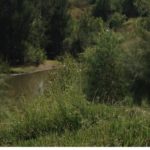 Roads are a major asset, probably the major asset, of every council, so ‘doing different’ here can make a real impact. So, following on from our earlier post (Feb 6) by Rebecca Brown, here is another angle on road recyling, this time by Con Rimpass, Pavement Analysis, who looks at not just partial use but 100% recycling of roads with cold asphalt, improving on the ‘cradle to grave’ notion, by extending it to perpetual life! Both authors are presenting their work at the 2018 IPWEA State Conference, Perth, March 21st to 23rd.
Roads are a major asset, probably the major asset, of every council, so ‘doing different’ here can make a real impact. So, following on from our earlier post (Feb 6) by Rebecca Brown, here is another angle on road recyling, this time by Con Rimpass, Pavement Analysis, who looks at not just partial use but 100% recycling of roads with cold asphalt, improving on the ‘cradle to grave’ notion, by extending it to perpetual life! Both authors are presenting their work at the 2018 IPWEA State Conference, Perth, March 21st to 23rd.
Con says: There is nothing new about cold mixed recycled asphalts, they have been around, particularl in France, since the mid 1970s and known as cold mix asphalt & grave-emulsion and they have been manufactured from either new or recycled material or a combination. Cold mixed asphalt and bitumen stabilisation are used in the renewal of both pavement structures (bases) as well as for surface wearing courses and have proven economic, environmental and safety benefits.
As Perth has grown in population so too has its length of roads and these aging roads now have to withstand heavier traffic with large loads on high tech tyres pumped to very high pressures, creating a huge increase in strain on the pavement structure. Perth has a network of road pavements that have had two or more asphalt overlays without any structural improvement to support layers and there is evidence that some money is being wasted on rehabilitations that are not providing satisfactory lives.
It is not possible, or economical, to continue to just resurface road pavements for ever without stiffening the support and it is important to try and recycle as much of the existing pavement materials as possible. The government is aware of this and are encouraging the use of recycled materials.
Asphaltech, in partnership with Pavement Analysis and collaboration and support from French experts have developed a process which makes it possible to 100% recycle and strengthen pavements with minimal disruption to traffic and exposure of workers to the safety aspects of working on live roads.
For those unable to hear Con at the conference, please enter your questions in the comments section (click the ‘add a comment’ tag in the menu above) and he will be happy to respond.
 Thought for the day
Thought for the day
‘Well chosen infrastructure projects contribute to job creation and increased productivity’.
Notice anything odd about this? (Apart from the fact that it is a circular statement, since ‘well chosen’ is presumably defined by the outcomes achieved.)
Increasing Productivity
When we ‘increase productivity’ we enable the labour force to produce more. This is normally done through investment in capital, and nowadays through increasing use of automation. When we are struggling to produce enough to meet demand, that is, in times of low unemployment and high demand pressure, increasing productivity leads to an easing in the economy, reducing inflationary pressures. It is good.
However, in times of low demand – i.e. when we have high unemployment – increasing the ability of firms to produce more with less, may increase profits, but if there is not the demand in the economy to soak up this increased output, this is at the expense of reducing their need for labour. Then, it is not so good, at least not for labour. And, to the extent it is successful, increases the demand for job creation.
Job Creation
When do we wish to ‘create jobs’ – in times of high, or low, unemployment? Clearly in times of high unemployment. In other words, precisely at the time when ‘increasing productivity’ will lead to less job creation’.
‘Job creation’ and ‘increased productivity’ would thus seem to be incompatible goals for Government. And hardly justification for expensive investment in infrastructure. There must be a better argument.
Thoughts?

This is by way of a ‘heads up’ to coming posts on infrastructure decision making. In June last year, the Institute for Government in the UK produced the report “What’s wrong with infrastructure decision making: conclusions from six UK case studies”
Major conclusions were:
- There is no national strategy for infrastructure investment
- Government does not devote enough time to assessing early options and seizes apon preferred projects too soon
- The more ambitious the project, the more questionable the model
- A failure to understand project risk
- The difficulty of making decisions which create ‘concentrated losers’ (which can and do become vocal opposition groups)
- Inadequate post project evaluation means we do not learn for future projects
You can probably identify with all of these problems in your own work. The Institute draws on mega projects in the UK such as The Third Heathrow Runway, the High Speed 1 and 2 rail proposals and the ultra expensive Hinkley Point C nuclear energy plant proposal, amongst others. But you can think of large and small projects in your organisation, state or country.
Over the next six posts we will consider each of these and then look more closely at the way we make our infrastructure decisions here in Australia. We are all familiar with studies that argue that government decision making is abysmal and should be replaced with private sector decision making, which is assumed to be so much better ‘because it is focussed on profit making’. But when it comes to infrastructure, both economic and social infrastructure, ‘profit-making’ is not the goal. Here, we are really looking at ‘the social value of shared resources’ in the terms of Brett Frischmann.
It is important to bear this in mind as we consider these infrastructure decision making problems, no matter who is making them, for when an infrastructure decision is passed to the private sector to make, it is a public sector decision that makes this possible.
QUESTION: What other problems beside these can you identify?
 The 9th World Urban Forum was held in Kuala Lumpur a week ago. This is where tens of thousands of people from across the world gather to find ‘best practice’ examples and ideas that they can take back to their countries or organisations to improve their communities. Now, apart from being different from what is being done now, what commends a particular ‘best practice’ example to any individual participant? What should? What do you look for in a ‘best practice’ example? (e.g. what tells you that it IS ‘best practice’?) What would it take to develop a guidance tool to quickly assess any given example, to enable you to hone in on those with the most opportunity for success? Considering the dangers of ‘doing different’ just for difference sake, of which we spoke in the last post, I have, over the last few months, been speaking with a couple of colleagues as to how this could be done.
The 9th World Urban Forum was held in Kuala Lumpur a week ago. This is where tens of thousands of people from across the world gather to find ‘best practice’ examples and ideas that they can take back to their countries or organisations to improve their communities. Now, apart from being different from what is being done now, what commends a particular ‘best practice’ example to any individual participant? What should? What do you look for in a ‘best practice’ example? (e.g. what tells you that it IS ‘best practice’?) What would it take to develop a guidance tool to quickly assess any given example, to enable you to hone in on those with the most opportunity for success? Considering the dangers of ‘doing different’ just for difference sake, of which we spoke in the last post, I have, over the last few months, been speaking with a couple of colleagues as to how this could be done.
Where do we start? Firstly – Know thyself! Those of you who were caught up in the benchmarking craze some years ago, may remember how organisations would gleefully arrange meetings with ‘best practice’ organisations to see what they could glean. And they would do this, without first taking the trouble to understand fully what they were themselves doing. Many changes were made that lacked understanding, and caused more damage than they avoided.
A first iteration of such a guidance app, with a strong focus on understanding our own organisations and what is driving their decision making, was trialled at the Urban Forum in KL last week which established proof of concept.
We are now considering a forum for further development and testing.
Question:
Does this idea intrigue you? And would you would like to be part of its further development? If so, please let me know in the comments section below or write me at penny@TalkingInfrastructure.com
Next Week: Problems with Infrastructure Decision Making.
 Our theme this month is ‘doing different’. But it pays to ask ‘Why’? – and what may be the consequences of not paying attention to this question.
Our theme this month is ‘doing different’. But it pays to ask ‘Why’? – and what may be the consequences of not paying attention to this question.
The human mind is hardwired for novelty. We seek out what is different and exciting. And it has served us well. It has been the source of our greatest inventions. But it can also lead us astray. When I left the University to work in the public service back in the early 1980s, every heavy engineering organisation (rail, ports, power, water, telecommunications) was headed up by an engineer – a guy (and they were all guys) who knew how to get things done. At this time, ‘stewardship’ was the word most accorded to those who ‘took care of’ assets, asset management was still in the future. But as the administration gradually moved from stewardship into management, we saw a different face at the top. And these different faces were finance and accounting. These guys (again!) knew what things cost. Under this leadership, we focussed on efficiency rather than effectiveness, or, in practice, ‘getting costs down’. This was when we introduced outsourcing, later to be followed by corporatisation and privatisation. The next move at the top was to ‘content free management’, these were people who were not engineers who knew how to get things done, and not finance who knew how much things cost, they were people trained in nothing more than ‘management’ itself. And now we started to see more female faces at the top. We also started to see something else. Whereas previous heads had worked to ‘keep the show on the road’, this new crop of managers were keen to ‘do something different’. The more radical the difference, the greater the publicity that they could expect. The publicity they garnered was sufficient to move them on to the next top job. Few stayed around longer than a few years to cope with the damage they caused.
We continue to exhalt difference for its own sake. ‘Disruptive’ is the joyful current buzzword. As if disruption itself was the benefit. How many times do you find new ideas presented at conferences – and how few are the times when those same presenters return a few years later to tell you honestly what the outcomes were? In fact, In our haste to move on to the next new and shiny thing, how much time and effort do we put in to make the last change succeed?
I still believe that we need to ‘do different’ – but not for its own sake!
My question today is: If not for its own sake – what IS the purpose of ‘doing different’?
This opens up a whole realm of possibilities for using environmental science and illustrates the importance of thinking of traditional infrastructure solutions as a ‘last resort’ rather than a first! This post is by Chris Adam, Director of Strategic AM Pty Ltd, Brisbane, Queensland
 Nitrogen (TN) creates problems in the ecosystem due to the tendency to create algal blooms that can disrupt the food chain. Thirty years ago point source loads (e.g. Sewerage Treatment Plants) were a problem. Who can forget the Sydney beaches of the 1980s when the wind turned onshore? Over the last 20 years we have made huge inroads into resolving these issues. More could be done but we are getting close to the top of the economically rational return to scale. So what ELSE can we do?
Nitrogen (TN) creates problems in the ecosystem due to the tendency to create algal blooms that can disrupt the food chain. Thirty years ago point source loads (e.g. Sewerage Treatment Plants) were a problem. Who can forget the Sydney beaches of the 1980s when the wind turned onshore? Over the last 20 years we have made huge inroads into resolving these issues. More could be done but we are getting close to the top of the economically rational return to scale. So what ELSE can we do?
Queensland Urban Utilities
Queensland Urban Utilities have piloted a couple of nutrient offset projects in which riverbank stabilisation and remediation (leading to a reduction in sediment runoff and therefore TN into the bay). These projects have performed really well (in fact, in the recent torrential rainfall from the tropical low that was once Cyclone Debbie, the sites not only stood up to the challenge but captured sediment!!).
Making a very long story short, the cost of these schemes seem to be in the order of $25,000 per tonne of TN. The current cost of treatment for all EXISTING Wastewater Treatment Plants is in the order of $13,000/Tonne (no surprises here – the return to scale of the existing network is the most cost effective option for removing nutrients). However the cost of augmentation of treatment plants starts at $50,000/tonne. So, what does this mean? We sweat the existing treatment plants (even overloading them hydraulically if necessary) as that’s the cheapest nutrient removal option. However, the next best option seems to be nutrient offsets through land remediation.
There are challenges here in that the regulator will currently only allow offsets against wet weather flow (this is based on the logic that the offset program only removes sediment during rain events which is an assumption that we could debate). The “least best” option is augmentation of the plants (i.e. “hard engineering” that locks in a centralised service model and ignores potential technical obsolescence of the plant itself).
The US EPA have gone further and have set up nutrient trading markets as a mechanism to manage/minimise TN discharge across point and non-point sources of pollution. A similar scheme has been in operation in Lake Taupo in NZ and there are schemes (in the early stages of development) being piloted for the Great Barrier Reef).
What this means is that the water services engineer of tomorrow will definitely have to think beyond the traditional “engineered” solution and understand the issues across a much broader range of inputs/outcomes. It’s very interesting times .
Thoughts?

Our post today – with thanks – builds on an idea by Rebecca Brown, Manager Waste & Recycling at WALGA, who will be presenting at the March WA State Conference of the IPWEA. (details below).
The first stage to ‘doing different’ is to imagine!
Rebecca says: “Imagine a road that is made from completely sustainable products and when it wears out will be used as the input into another road or project. All the materials will circle through the system again and again. This is the aim of the circular economy and the direction our State is going. Instead of the current linear economy model – dig, use, dispose, in the Circular Economy approach no materials go to waste, everything is an input into another process.
That may seem like an unattainable goal, given WA currently generates about 2 tonnes of waste per household/year, but for civil works this aim is completely achievable. Using old roads for new, using innovative materials and sourcing high quality construction and demolition materials all provide us with a way to move towards achieving a circular economy in WA.”
At the forthcoming WA State Conference of the IPWEA, “Rebecca Brown, Manager Waste & Recycling at WALGA will provide a brief overview of the Circular Economy approach and how it fits into the State Government’s new direction, provided by an updated State Waste Strategy. Drawing on lessons from over 10 years of experience using a range of recycled materials, Colin Leek, an industry expert, will share his experience and present case studies of how to use these materials to close the loop. Dave Markham, Chair of the Waste Management Association C&D Working Group will explain the processes in place to ensure that high quality process.”
The second stage to ‘doing different’ is to extend.
In other words to see if we can apply what we have learned in one situation – for example, as in the above, for renewing existing roads – to totally new situations.
Can we imagine a situation where, instead of accruing more and more roads, we are able to decommission an existing road in favour of a more relevant route – return the road to arable, residential, or park lands – and re-utilise the road materials in the new location?
What would it take to make this idea reality?
 A new month – and a new theme. This month we are looking at ways of ‘doing different’. To introduce this theme, what better than to use the Ted Talk presented in 2009 by adman Rory Sutherland (kindly drawn to my attention by Hein Aucamp, one of our regular contributors).
A new month – and a new theme. This month we are looking at ways of ‘doing different’. To introduce this theme, what better than to use the Ted Talk presented in 2009 by adman Rory Sutherland (kindly drawn to my attention by Hein Aucamp, one of our regular contributors).
In this talk Rory argues that the role of advertising is to create intangible value (or perceived, subjective, or ‘badge’ value). His opening story tells of a group of engineers who, some ten years previously, were asked how to improve the train trip from London to Paris. The engineers come up with a solution requiring the construction of new rail tracks to the coast, costing 6 billion, to cut 40 minutes off the then 3.5 hour travel time. Rory considered this a particularly unimaginative solution and presented his alternative – employ the world’s top male and female supermodels to walk up and down the train handing out free Château Pétrus. “You’ll still have about 3 billion in change, and people will ask for the trains to be slowed down!” In other words, we can improve the trip by making it more enjoyable rather than simply making it shorter. His whole TED talk, which you can find here, is a great example of this – so enjoyable, you wish it were longer! It is also full of ideas that may be used to help change focus and produce better results – by ‘doing different’.
So this month we are looking for examples of ‘doing different’
– examples that will improve outcomes (social, environmental and economic) by reducing the draw on scarce resources, a ‘less is more’ approach to infrastructure and construction. Your inspiring examples welcome. Please send them to me at penny@TalkingInfrastructure.com
And don’t forget that you can join in discussion on earlier blog posts.
The posts are designed as conversation starters. Show your appreciation by adding your perspective, your suggestions, your experience.

Recent Comments